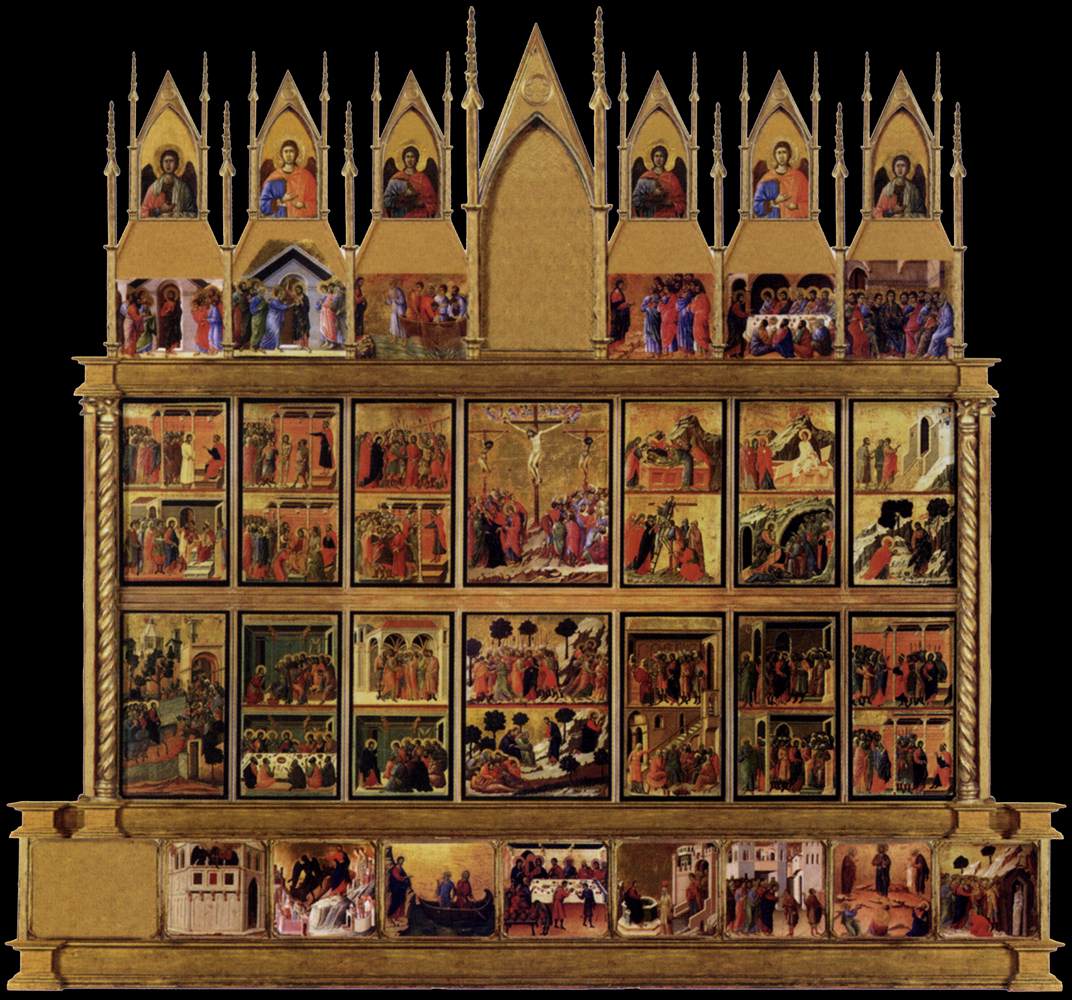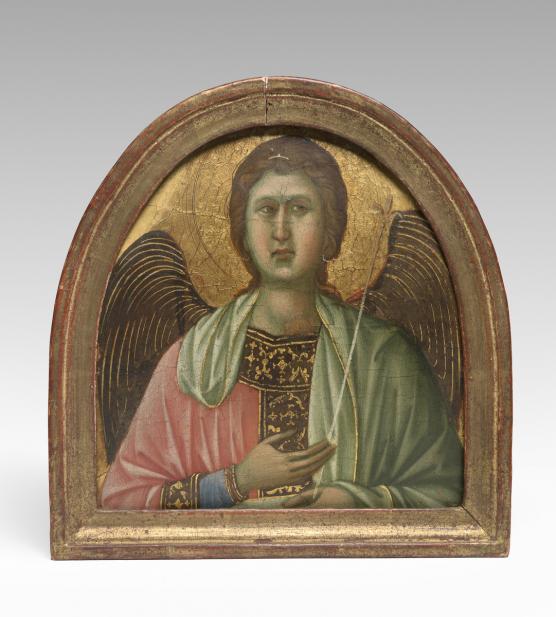By: Amy Fredrickson
Today in 1311 Duccio di Buoninsegna’s (c.1260-1319) Maestà altarpiece was installed in Siena Cathedral; the city of Siena commissioned the altarpiece in 1308.
As a leading artist in the Sienese School of Painting during the trecento, Duccio ran a large workshop that ultimately shaped Sienese painting.
Originally, the altarpiece was designed for the high altar. It is two-sided, and the wide central panel depicts the Virgin and child surrounded by saints and angels. The front predella illustrates Christ’s early life. The front crowning section shows the final days of the Virgin.
On the backside, Duccio combined the cycle of the Life of the Virgin and the Life of Christ— totaling fifty-three small scenes. The back-crowning portion shows the story of Christ’s resurrection. Inscribed on the base on the panel is ‘Holy Mother of God, be thou the cause of peace for Siena and, because he painted thee, thus, of life for Duccio.’
Scholars asserted that Duccio’s altarpiece set the course leading away from Byzantine art towards artistic realism.
The altarpiece was dismantled in 1771. The main front panel is in the Siena Museo dell’Opera del Duomo, while some of the other, approximately forty panels, are located in several art museums, such as: the National Gallery, London; the National Gallery of Art, Washington DC; the Frick Collection, New York; Philadelphia Museum of Art, Philadelphia; Mount Holyoke College, South Hadley, Massachusetts; and the Kimbell Art Museum in Fort Worth, TX.
Images:
Reconstruction of the Maestà Altarpiece (front), Digitized reconstruction of panels. (Web Gallery of Art).
Reconstruction of the Maestà Altarpiece (back), Digitized reconstruction of panels. (Web Gallery of Art).
The Annunciation, egg tempera on wood, 44.5 x 45.8 cm. The National Gallery of Art, London.
Angel, egg tempera with gold leaf on panel, 22.5 cm x 21.6 cm. Mount Holyoke College Art Museum, South Hadley, Massachusetts.
The Raising of Lazarus, tempera and gold on panel, 43.5 x 46.4 cm. The Kimble Art Museum, TX.
The Transfiguration, egg tempera on wood, 48.5 x 51.4 cm. The National Gallery, London.
Bibliography:
Dougherty, Mary, ‘Duccio’s Prayer’, Destruction and Creation: Personal and Cultural Transformations, ed. Mary Ann Mattoon, (Diamon, 1999), p. 23.
Gordon, Dillian. “Duccio.” Grove Art Online. 7 Jun. 2018. http:////www.oxfordartonline.com/groveart/view/10.1093/gao/9781884446054.001.0001/oao-9781884446054-e-7000023857.
Further Reading:
J. Cannon and V. Pemberton-Pigott: ‘The Royal Collection Duccio: A Triptych Reconsidered’, Apollo,155, 486, (2002), pp. 10–18
P. J. Earenfight: ‘Manuscript to Altarpiece: Duccio’s Maestà Passion Cycle and Medieval Illuminations’, Source, 13, (1994), pp. 6–13
V. M. Schmidt, ed., Italian Panel Painting of the Duecento and Trecento, Studies in the History of Art, 61 (Washington, DC, 2002)
J. H. Stubblebine: ‘Byzantine Sources for the Iconography of Duccio’s Maestà’, Art Bulletin, 57 (1975), pp. 176–85
R. W. Sullivan: ‘Some Old Testament Themes on the Front Predella of Duccio’s Maestà’, Art Bulletin, 68 (1986), pp. 597–609






